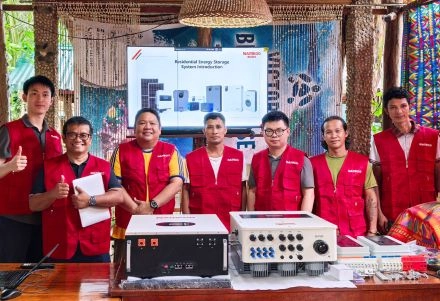
Renewable energy sources such as solar and wind energy have the disadvantage of intermittency, and energy storage systems (ESS) can ensure the stability of power supply and play a vital role in green energy infrastructure. ESS technology uses configured solar or wind energy facilities to provide clean energy and can respond instantly to power outages.
Electric energy storage system integration (ESS) is the multi-dimensional integration of various energy storage components to form a system that can store electrical energy and supply power. The energy storage system stock (ESS) mainly consists of two parts: battery management system (BMS) and power conversion system (PCS). The PCS performs AC/DC and DC/AC conversion, enters the electric energy into the battery, charges the battery, or converts the energy stored in the battery into alternating current and then transmits it back to the grid.
Driving Factors for Energy Storage Systems
ESS are witnessing remarkable growth due to several key drivers, including:
Grid-Stabilizing ESS Projects: The increasing deployment of grid-stabilizing ESS projects is a primary driver. These systems enhance grid reliability and flexibility.
Energy-Intensive Industries: Energy-intensive sectors like data centers are adopting ESS to ensure uninterrupted power supply, protecting critical operations.
Uninterruptible Power Supplies (UPS): The rising demand for uninterruptible power supplies is boosting ESS adoption. These systems offer crucial backup power during outages.
Residential Solar + Storage: The residential market is experiencing a surge in solar + energy storage solutions, providing homeowners with energy independence and resilience.
Advancements in Renewable Technologies: The growing popularity and efficiency of wind and solar photovoltaic technologies make ESS integration more attractive.
Time Shifting: ESS technology facilitates time shifting, allowing excess energy to be stored and used when needed, reducing reliance on peak demand.
In the fast-evolving power industry, many companies are turning to renewable energy sources to meet diverse needs. However, these sources, such as solar and wind, are vulnerable to weather changes. ESS systems play a critical role by storing excess energy, mitigating the intermittency of renewables, and ensuring a reliable power supply.
Moreover, it offers substantial annual cost savings. According to estimates by the Energy Futures Laboratory at Imperial College London, energy storage technology could potentially save the UK £10 billion per year by 2050.
According to storage media, energy storage technology is mainly divided into mechanical energy storage (pumped water energy storage, compressed air energy storage and flywheel energy storage), electrical energy storage (supercapacitor energy storage and superconducting energy storage), and electrochemical energy storage. energy (lead-acid batteries, lithium-ion batteries, sodium-sulfur batteries and flow batteries), thermal energy storage and chemical energy storage.
1. Chemical energy storage
2. Electrochemical energy storage
3. Mechanical energy storage
4. Electrical energy storage


Energy storage systems find diverse applications across industries, including automotive, power generation, and utilities. The primary energy storage applications encompass:
1.Emergency Backup
Distributed generation (DG), which involves local electricity generation, coupled with energy storage, provides backup power during grid failures. It ranges from residential backup to instantaneous power quality maintenance for industries.
2.Energy Arbitrage
Batteries act as intermediate storage to buy electricity during low-price periods and sell it during high-price periods, optimizing cost savings.
3.Load Balancing
Energy storage smoothens power supply by storing excess energy during periods of low demand and releasing it during peak demand.
4.Network Stability
Energy storage enhances the performance of transmission and distribution (T&D) systems by compensating for power anomalies, including subsynchronous resonance, voltage instability, and voltage sags.
5.Peak Shaving
This involves managing overall electricity demand to eliminate peak usage, reducing reliance on expensive electricity during peak periods.
6.Time Shift
Energy storage helps store energy when prices are low and discharge it during high-price periods, reducing electricity costs.
7.Voltage Regulation
Maintaining stable voltage in the power grid ensures reliability. Energy storage systems assist in this by keeping voltage within an acceptable range.

Storing energy reduces the imbalance between energy demand and production, and energy storage systems enhance grid resilience, helping to manage the mismatch between power supply and demand.
Namkoo provides customized lithium battery energy storage solutions, and is currently supplying new energy solutions for residential, commercial, industrial, and utility applications in 100+ countries around the world. Long-term energy storage has become a necessity in areas with high concentrations of solar and wind farms, and Namkoo has made a sustained and long-term effort in this area, with a 30+ R&D product development team and technical staff to support customers before and after the sale.

Introducing the components of energy storage systems, enablers, technology and application, providing the information you most want to know about energy storage.



Discover the hidden risks of Home Solar Power Systems and how to stay safe. Learn expert tips from Namkoo and explore safe residential solar solutions.



Namkoo delivers hands-on training in Palawan, Philippines, helping partners master solar powered products through real installation practice and technical guidance.



No.133 Jingying International Business Center, Jihua West Road, Chanchen District,Foshan,Guangdong, China (528000)
Contact Number: +86 18826309307
Email: [email protected]